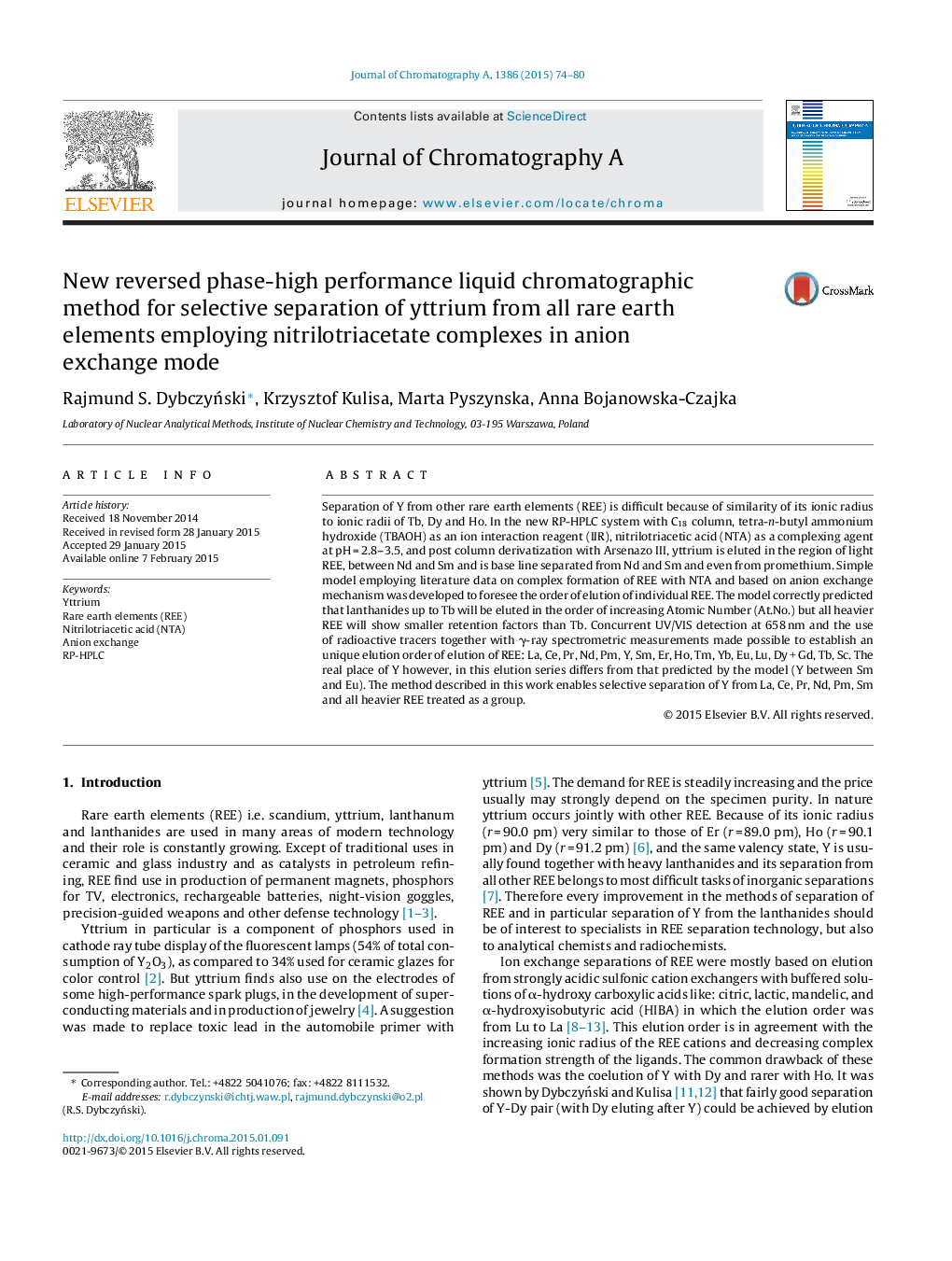| Article ID | Journal | Published Year | Pages | File Type |
|---|---|---|---|---|
| 1202040 | Journal of Chromatography A | 2015 | 7 Pages |
•Yttrium is separated from all lanthanides with base line separation from Nd and Sm.•First chromatographic separation of REE complexes with NTA by anion exchange.•Simple model based on anion exchange predicts unique elution order of the lanthanides.•Concurrent UV/VIS and radiometric detection identified chromatographic peaks.
Separation of Y from other rare earth elements (REE) is difficult because of similarity of its ionic radius to ionic radii of Tb, Dy and Ho. In the new RP-HPLC system with C18 column, tetra-n-butyl ammonium hydroxide (TBAOH) as an ion interaction reagent (IIR), nitrilotriacetic acid (NTA) as a complexing agent at pH = 2.8–3.5, and post column derivatization with Arsenazo III, yttrium is eluted in the region of light REE, between Nd and Sm and is base line separated from Nd and Sm and even from promethium. Simple model employing literature data on complex formation of REE with NTA and based on anion exchange mechanism was developed to foresee the order of elution of individual REE. The model correctly predicted that lanthanides up to Tb will be eluted in the order of increasing Atomic Number (At.No.) but all heavier REE will show smaller retention factors than Tb. Concurrent UV/VIS detection at 658 nm and the use of radioactive tracers together with γ-ray spectrometric measurements made possible to establish an unique elution order of elution of REE: La, Ce, Pr, Nd, Pm, Y, Sm, Er, Ho, Tm, Yb, Eu, Lu, Dy + Gd, Tb, Sc. The real place of Y however, in this elution series differs from that predicted by the model (Y between Sm and Eu). The method described in this work enables selective separation of Y from La, Ce, Pr, Nd, Pm, Sm and all heavier REE treated as a group.
